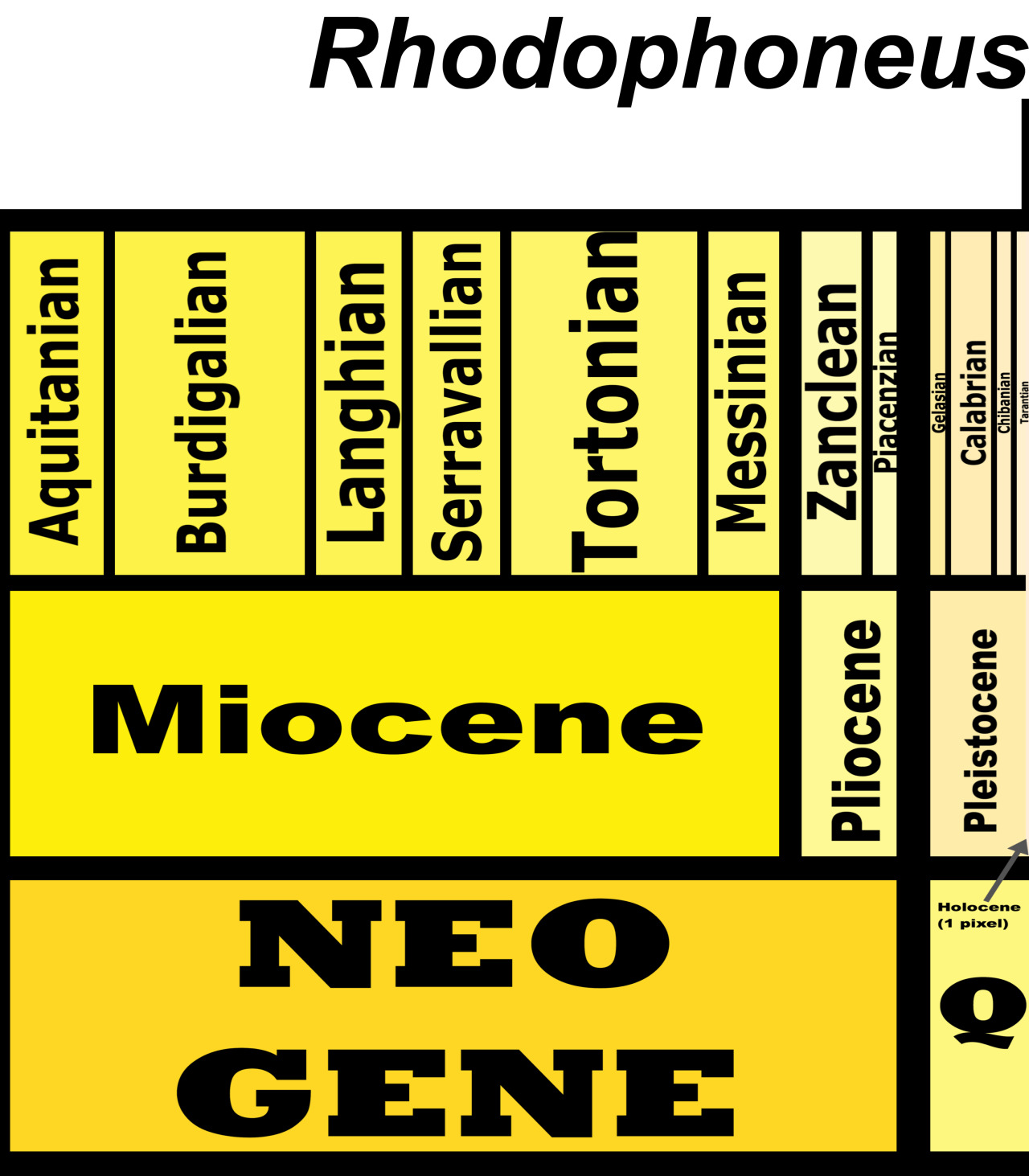
By Nigel Voaden, CC BY-SA 2.0
Etymology: Murderer of Roses
First Described By: Heuglin, 1871
Classification: Dinosauromorpha, Dinosauriformes, Dracohors, Dinosauria, Saurischia, Eusaurischia, Theropoda, Neotheropoda, Averostra, Tetanurae, Orionides, Avetheropoda, Coelurosauria, Tyrannoraptora, Maniraptoromorpha, Maniraptoriformes, Maniraptora, Pennaraptora, Paraves, Eumaniraptora, Averaptora, Avialae, Euavialae, Avebrevicauda, Pygostaylia, Ornithothoraces, Euornithes, Ornithuromorpha, Ornithurae, Neornithes, Neognathae, Neoaves, Inopinaves, Telluraves, Australaves, Eufalconimorphae, Psittacopasserae, Passeriformes, Eupasseres, Passeri, Euoscines, Corvides, Malaconotoidea, Malaconotidae
Status: Extant, Least Concern
Time and Place: Within the last 10,000 years, in the Holocene of the Quaternary


The Rosy-Patched Bushshrike is known from the Horn of Africa

Physical Description: The Rosy-Patched Bushshrike is a fairly large passerine, reaching 22 to 23.5 centimeters in length. They are very distinctive in appearance as well, with a very heavy and strong bill that is hooked and notched in appearance. They have grey feathers along their backs, a white stripe over the eye, and yellowish feathers along the belly and butt. Their tails are fairly long as well. The males have a red patch across their neck and chest, while the females have a black patch on the neck that switches to a red patch on the chest. Some populations of this species also have red patches on their butts, and males with black and red patches on their throats. This rosy patch makes them extremely distinctive to spot in the wild.
Diet: The Rosy-Patched Bushshrike mainly feeds on insects, especially beetles and grasshoppers.
Behavior: This bird will spend most of its time foraging in open terrain, especially scrub and grassland, usually far away from any sort of tree cover. They forage amongst the surface litter, hopping over obstacles and onto prey and running fast over the ground. When they do fly, they do so very low over the ground. Usually they spend their time alone or in mated pairs, though they are occasionally in small groups; they try to keep out of sight of humans, but they are a restless sort of bird, and will often just run around even though you wouldn’t expect it to. They make very thin, piercing whistles, though they’ll also sing high-pitched “twee-u-twee-u-twee-u” songs, alternating between higher and lower pitches. They will call each other for long periods of time on top of bushes, with only the head visible from the bush. Sometimes, mated pairs will even duet together. Their alarm class are very harsh “krrr krrrr krrr” sounds.
 By Roy Prasad, CC BY-SA 4.0
By Roy Prasad, CC BY-SA 4.0
The Rosy-Patched Bush-Shrike breeds whenever rain occurs, usually in spring and early summer, though this varies across its range. The males often sing against each other to compete for a mate, stretching their legs and body upwards while whistling at each other. When a female arrives, they will chase each other around with their wings outstretched and tails fanned to try and impress her. They then perch on dead branches, bobbing up and down while the female just watches. Eventually one wins the argument, and the pair nests together in a concealed spot among the thorn bushes and shrubs. They make the nest out of fibres, twigs, and dry grass in an untidy shallow cup. They lay two to three eggs in a nest. These birds do not migrate, and stay within their home range for most of their lives. However, they do wander occasionally, especially in response to changes in water levels.
Ecosystem: The Rosy-Patched Bush-Shrike lives in hot coastal plains and dry open scrub fields, as well as arid brush and semi desert habitats. They are occasionally also found in acacia groves.
Other: This bird is not globally threatened, though some populations are quite rare compared to others.
~ By Meig Dickson
Sources under the Cut
Fry, H. (2019). Rosy-patched Bush-shrike (Rhodophoneus cruentus). In: del Hoyo, J., Elliott, A., Sargatal, J., Christie, D.A. & de Juana, E. (eds.). Handbook of the Birds of the World Alive. Lynx Edicions, Barcelona.
Jobling, J. A. 2010. The Helm Dictionary of Scientific Bird Names. Christopher Helm Publishing, A&C Black Publishers Ltd, London.
